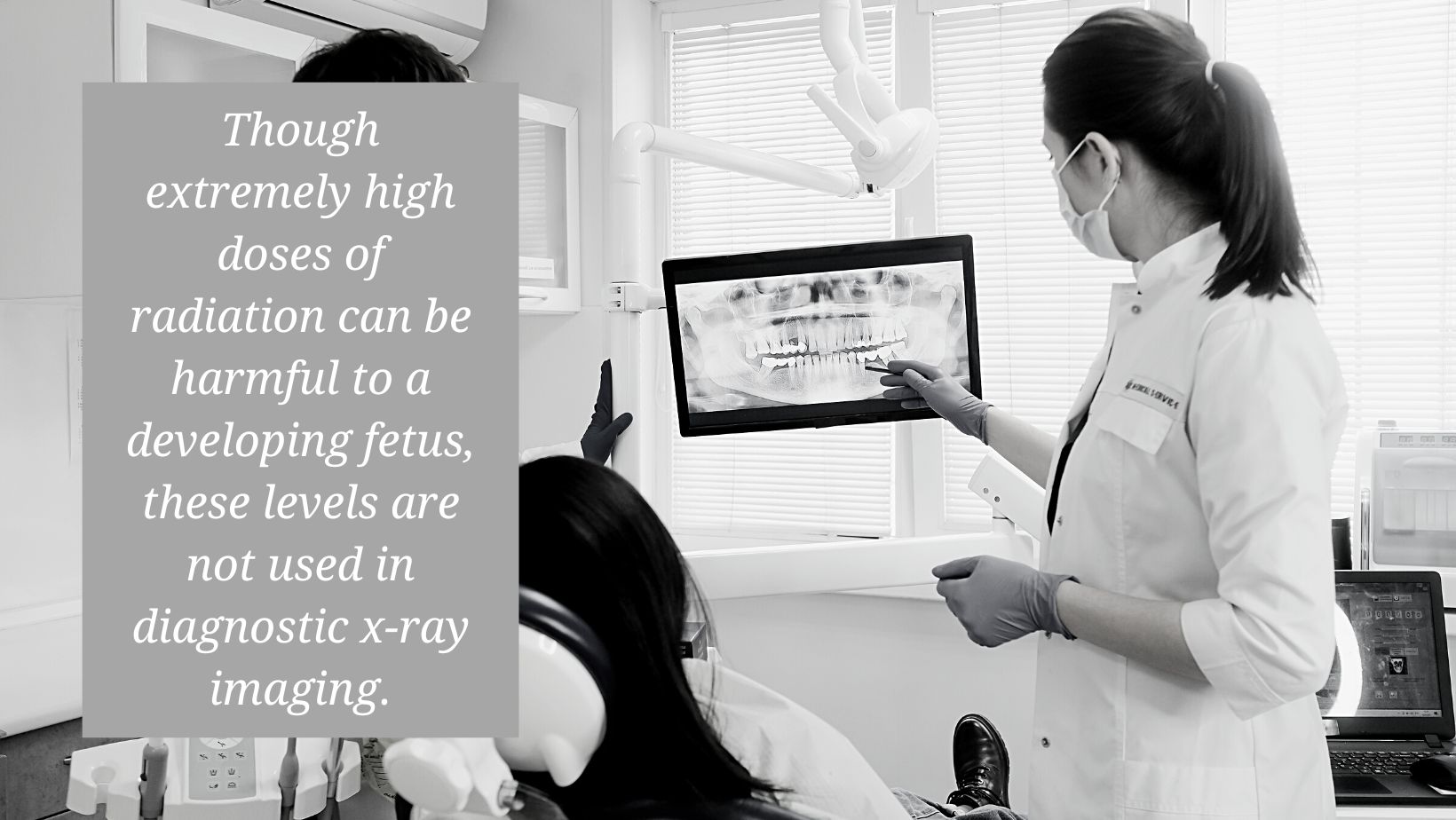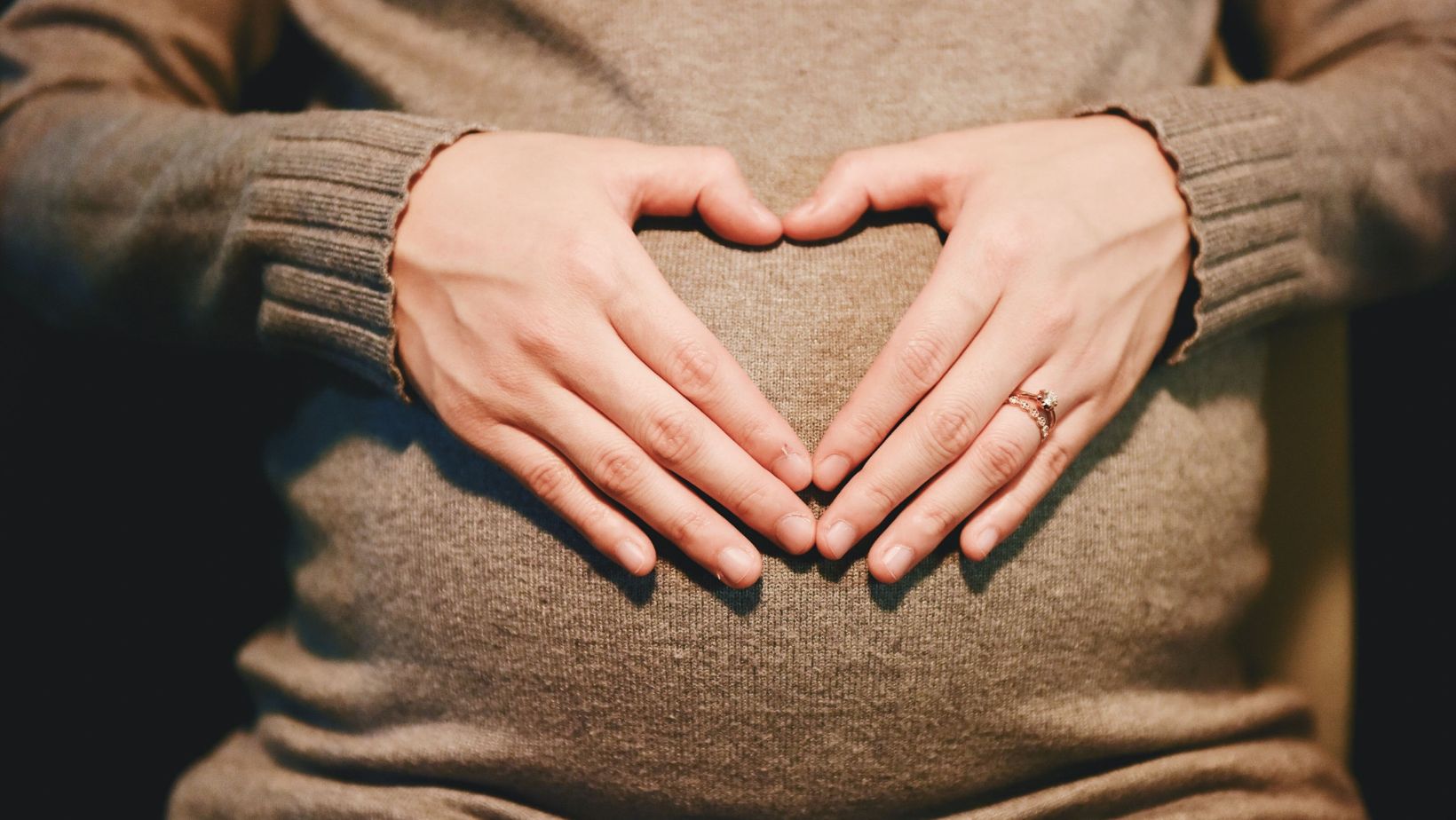Dental x-rays are an important part of every dentist’s toolkit for detecting cavities and other issues in a patient’s mouth. While x-rays are considered very safe for most patients, what about for pregnant people? Pregnant women are often told a list of things to avoid during this important time to keep them and their baby safe and healthy. Luckly, dental x-rays are not on that list.
While pregnant parents might be concerned that radiation exposure could harm their baby, dental x-rays focus only on the patient’s mouth. The amount of radiation produced by dental x-rays today is minimal, and the fetus will not be exposed at all. In fact, the American Dental Association (ADA) and the United States Food and Drug Administration (FDA) have determined that they are safe for everyone, including children and pregnant women.
Because X-rays can quickly diagnose problems that could affect a mother’s health, their benefits are considered to outweigh any risks.
What Are Dental X-Rays?
Understanding how dental x-rays work can help alleviate concerns about their use on pregnant patients. Also called radiographs, dental x-rays are a non-invasive tool that helps dentists detect and diagnose various issues that cannot be seen with the naked eye. X-rays are important for helping dentists find and treat dental problems early-on, before they cause pain, discomfort, infection, or more serious health problems.
Dentists use different types of dental x-rays to, for example, monitor dental development in children, detect cavities between teeth, evaluate orthodontic issues, and check the progress of restorations like root canals. The most common types of dental x-rays are:
- Bitewings: Used to detect decay between teeth or periodontal (gum) problems
- Periapical x-rays: Used to evaluate a single area, for instance, if the patient is experiencing pain or the dentist is performing a root canal
- Full mouth series: A series of about 20 x-rays used to establish a baseline of the patient’s overall dental health; these are generally taken at a first visit
- Panoramic x-ray: Used to evaluate the entire mouth and surrounding areas
Dental radiographs use a short, concentrated burst of electromagnetic radiation to capture an image of the teeth and surrounding tissues. Cavities, infections, and other conditions show up as dark spots on the lighter image of the tooth. The procedure is quick and rarely has any side effects. Though radiographs work by emitting radiation, the amount is very small and is considered perfectly safe.
X-Rays During Pregnancy are Safe
Over the years, technology has brought about significant advancements in the safety of dental x-rays.
Dentists and dental hygienists are trained to adhere to strict safety standards for the use of x-rays in a dental office setting. The Food and Drug Administration publishes safety guidelines for x-ray operation. The technology is regulated by state and local authorities, and dentists must license their equipment and have it inspected annually. Patient safety is maintained by:
- Only using X-ray equipment that is inspected and licensed by state and local authorities.
- Using protective aprons. For pregnant women, a protective apron will cover the abdomen to block any radiation from the x-ray, protecting the baby.
- Using a short exposure time. Modern x-ray technology requires a very short exposure to radiation to capture an image.
- Using a level of radiation exposure that is less than most other medical imaging technologies and natural sources.
Though extremely high doses of radiation can be harmful to a developing fetus, these levels are not used in diagnostic x-ray imaging. A dental x-ray is focused on the patient’s mouth, far away from the baby. Use of a protective apron further blocks any radiation exposure. For these reasons, dental x-rays are not associated with harm to a pregnant patient’s baby.

Modern X-Ray Technology Increases Safety
As technology has advanced, every type of dental x-ray has become even safer. Conventional x-rays of teeth use photographic film that is developed using chemicals in a dark room. Over the years, film based x-ray technology has been refined to require much less exposure to radiation. At the same time, most dentists today use digital images instead of film. Use of digital x-ray images reduces the amount of radiation by as much as 80% compared to film x-rays.
Another advance in technology for diagnosing dental issues is Cone Beam Computerized Tomography (CBCT). CBCT creates a panoramic 3D image of the patient’s entire dental anatomy. The technology provides images that are more accurate than 2D x-rays and keeps the patient’s radiation exposure to a minimum.
Should Pregnant People Delay Dental X-Rays?
Dental x-rays are a powerful diagnostic tool and part of a comprehensive dental exam. Adults are recommended to have x-rays every 12-24 months, or sooner if the patient is experiencing discomfort or the dentist needs to monitor previously diagnosed issues. Delaying x-rays recommended by the dentist means any underlying tooth decay, dental disease, or other problems could go undiagnosed. These could become worse over time and potentially cause pain and/or additional health issues for the pregnant patient.
Talk it Over with Your Dentist
Though dental x-rays have been determined to be safe when proper procedures are followed, some patients opt to delay dental x-rays until after the first trimester of pregnancy, since this is the most active period of time in terms of the development of the fetus.
The best way to decide about getting x-rays while pregnant is to discuss your concerns with your dentist. Use our online search tool to find a dental office near you.


